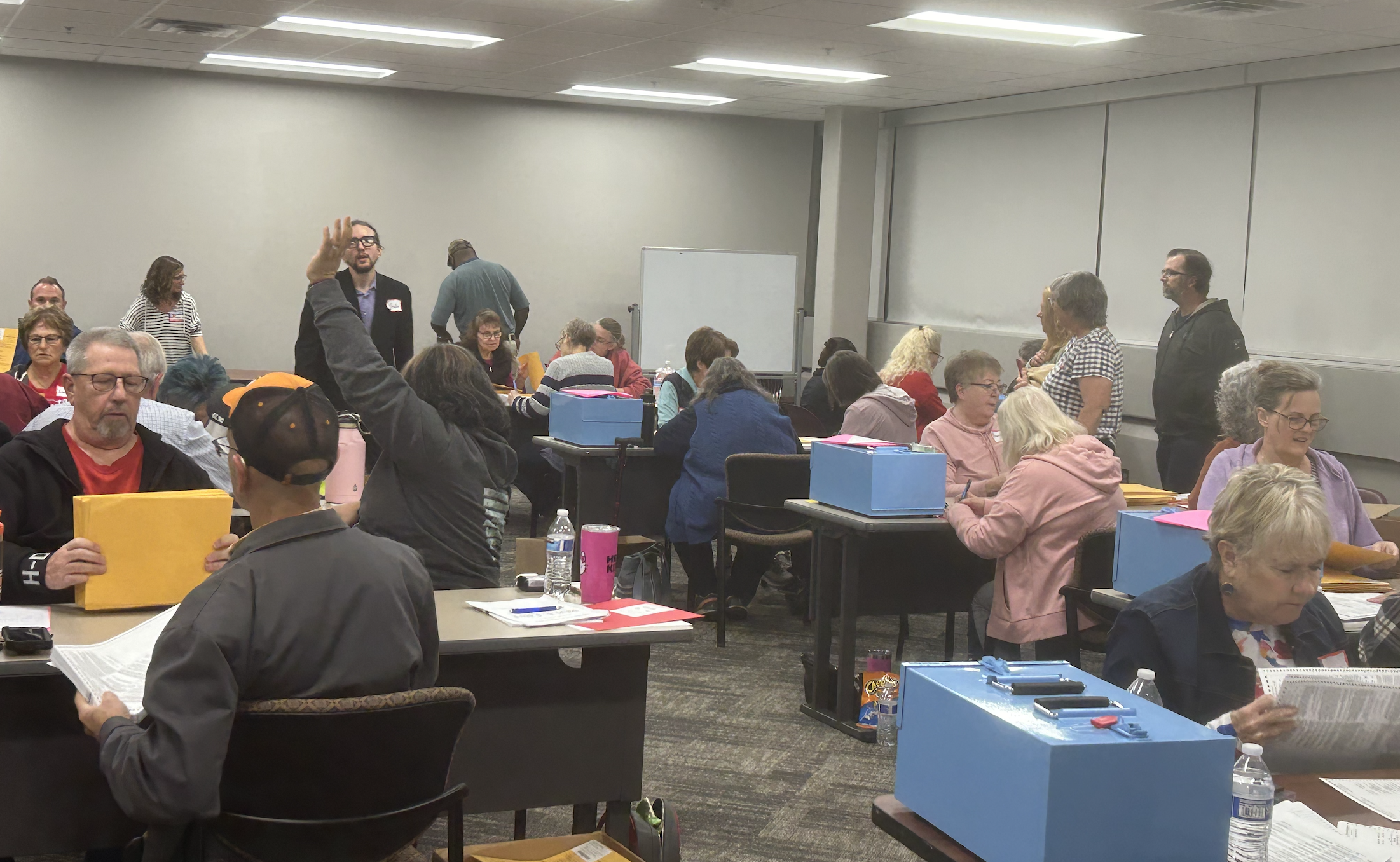Correction: An earlier version of this story misstated the number of ballots cast in Minnehaha County. There were 95,648 ballots in the county, and statewide there were more than 430,000.
Simplified: Hours after the presidential race was called, ballot measure results were in for the state and most South Dakotans knew who'd be representing them in Pierre, Minnehaha County voters were still waiting on election results well into the afternoon Wednesday. County Auditor Leah Anderson said she has no regrets for how things went, and she chatted with Sioux Falls Simplified about how the process works.
Why it matters
- More than 95,000 ballots were cast in Minnehaha County this election cycle– including about 29,000 absentee ballots and 2,000 ballots from overseas residents.
- Those absentee ballots – particularly the ones coming from residents abroad – are more time consuming to process, Anderson said. She also had challenges with the absentee board, getting them together and getting them to get through full precincts so those ballots could be run through tabulator machines.
- The slow results have faced some criticism from state lawmakers, including Rep. Tony Venhuizen (R), who tweeted that it was "embarrassing" that the state of Florida was nearly through ballot counting before Minnehaha County reported results. Rep. Kadyn Wittman called the delays "unacceptable," and said they're "undermining public trust in our election system."
- But Anderson said she doesn't think anything could've been done differently. She invited anyone who criticized the process to come volunteer to help next time.
"I don't have any regrets," she said. "It just takes time, and people just need to know that it takes time. We live in a society where people want instant results, and you can't always have instant results. We need accurate results."
How does ballot counting work?
The process looks a little different for absentee ballots vs. ballots cast on Election Day.
For absentee ballots, ballots are collected either via mail or from in-person absentee voting at the County Administration Building. The county auditor's office collects those ballots in a locked room until Election Day.
- Each night, the auditor's office conducts an "audit inventory" to make sure all of the received ballots are on-hand and have been undisturbed.
Additionally, the auditor's office staff spend a fair amount of time ahead of the election answering questions from voters.
"In some cases, we might make five contacts with a person," Anderson said.
For Election Day ballots, voters cast their ballot, drop it in the metal boxes at the precincts, and then precinct workers deliver those boxes to the county auditor after polls close.
On Election Day, absentee ballots are taken out of the envelopes, and volunteers help to organize them by precinct, verify the name against the voter registration list and write the name on a poll list.
- For overseas ballots, volunteers have to transcribe the submitted ballots onto the ballots that can be processed by the tabulators – a time-consuming process, Anderson said.
The ballots from in-person, day-of voting are counted, verified against the data poll workers shared. County staff verify the number of ballots each precinct receive, how many were cast, and how many extra ballots were delivered to the precinct – if any.
Once all of the ballots are counted and organized, they can go through the tabulator, which processes the results, which are then shared with the South Dakota Secretary of State and posted online.


